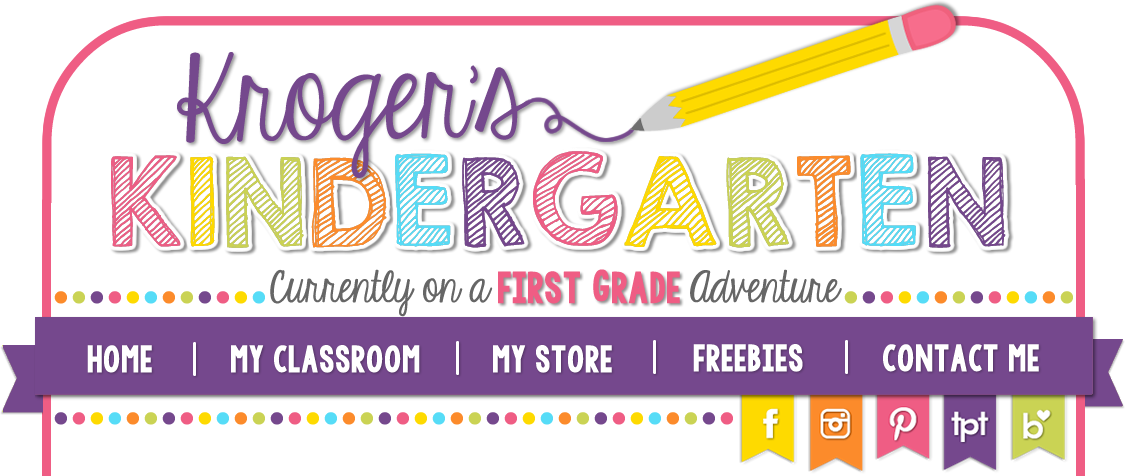I was talking with a friend about today about how I did literacy centers this year so I decided I would share with all of you as well. In my tiny 2 year career, I have gone through many MANY different methods of doing center time, but this method really worked for me this year and I think I will stay with it for a while. One of my teammates actually came up with this idea and I ran with it. It might seem a little overwhelming so stick with me...there are freebies to help at the end!
Here's the basics:
3 days of rotations
8 groups
9 stations
I broke my kids up into 8 groups (Since I have 18 kids this made for nice little groups - much better than the days when I had 4-5 UGH). Each week we had 9 stations. Each day of rotations the kids went to 3 stations and the teacher table. This is my favorite part of this method - I saw ALL my kids every day that we rotated.
I broke up the activities in the stations to that basically the kids had a "fun" station (playdoh mats, matchups/puzzles/games, computers, listening, leap pads, letter of the week craftivity, sight word craftivity, ect) then more of a "work" center (Center activities that I made or found on TPT/letter of the week sound and handwriting worksheets, ect). These stations usually had some sort of product so the kids had some accountability. Then the teacher table, and then another "work" station. So on any given day the kids had 2 center activities to complete, time with me, and more of a fun (but educational!!) station.
So here's a typical center rotations schedule
1. CVC word work center
2. Leap pads
3. Scrambled sentences
TEACHER
4. Roll and write sight word activity
5. Playdoh mats - building sight words
6. Letter of the week sound/handwriting practice
TEACHER
7. Beginning/ending sounds center
8. Computers (starfall, or other software)
9. Read, stamp, and write sight words activity
TEACHER
If I made "fun" stuff at 2, 5, and 8 it was the perfect pattern of work, fun, work, teacher, work, fun, work, teacher ect...
Each student gets a "map" and a center work folder for the week.

(You can download a set at the bottom of the post) The folder is just a 12x18 piece of paper folded in half and stapled to make an envelope/pocket with the map stapled on the front. When the students are cleaning up their center, they place their work in the folder and I come around with a marker or stamp. If they were quiet and on task during that station, they get a happy face or fun stamp. If they were not on task or caused trouble they usually get a sad face in that square. Then everyone checks their map to see where to go next and when I say "go" they move to the next station at the same time and get to work. We do a LOT of routines and explanations at the start of the year about HOW to rotate from one station to the next and how we STAY at our station until it is time to rotate. They are usually pretty good about this.
At the end of the day we usually had a time for "developmental centers" and I would quickly scan through the center folders and those who had been off task had to use that time to complete their work from the day. For some students it worked better to keep them back from rotating to the fun center with the rest of their group during rotations and make them stay and complete their work right then. It's no fun to watch your friends play on computers while you sit and do the work they already finished. Either way, I ALWAYS check center work.
For early finishers during rotations I usually have books at the stations or they can color a picture on the back of one of their sheets in their center folder. At the end of the week when the maps are all full, I send the whole folder home.
It might seem like a lot to manage and plan for but I really really LOVED rotating this way this year. Here's why:
I saw ALL my kids every day.
The small groups made it much easier to manage
They were all engaged in a variety of activities while I did small group
They rotated often enough that I didn't have long stretches of time where they had to occupy themselves.
There was a LOT of learning that went on over the course of a week.
Only having 3 rotation days took a lot of the pressure off when we had weird schedules or short weeks.
Once we got the procedures down, we could go through a whole days' rotation in just over an hour. They knew they were expected to stay on task, and clean and rotate QUICK. Strict, clear, expectations went a LONG way with this. (Also, it took me a few weeks to actually SIT at my teacher table with my groups while we were learning how to act and rotate).
Maybe this is interesting/inspirational to you, maybe you are ready to lock up and send me off to the loony bin. I just wanted to share what worked for me and my kiddos this year :)
The first download is a set of rotation maps. The second one is basically a visual of how the rotations go. I originally made that document to help me remember what kids were coming to my table, when, and where they were going, but I really didn't use it at all once I knew what was going on. BUT it does serve as a good visual aid for anyone who does not live inside my head haha.
Group Rotation Maps
Rotation Layout






















